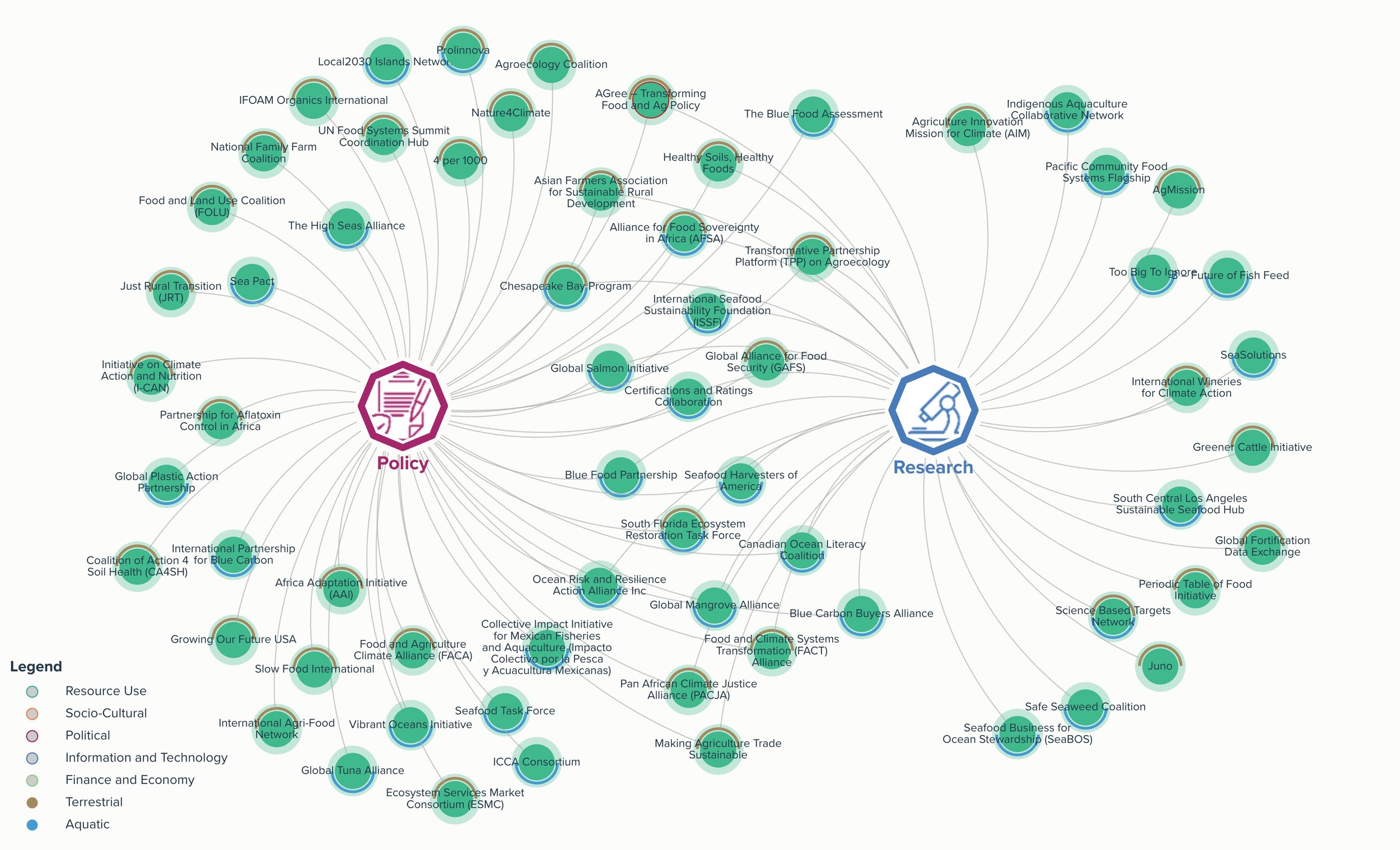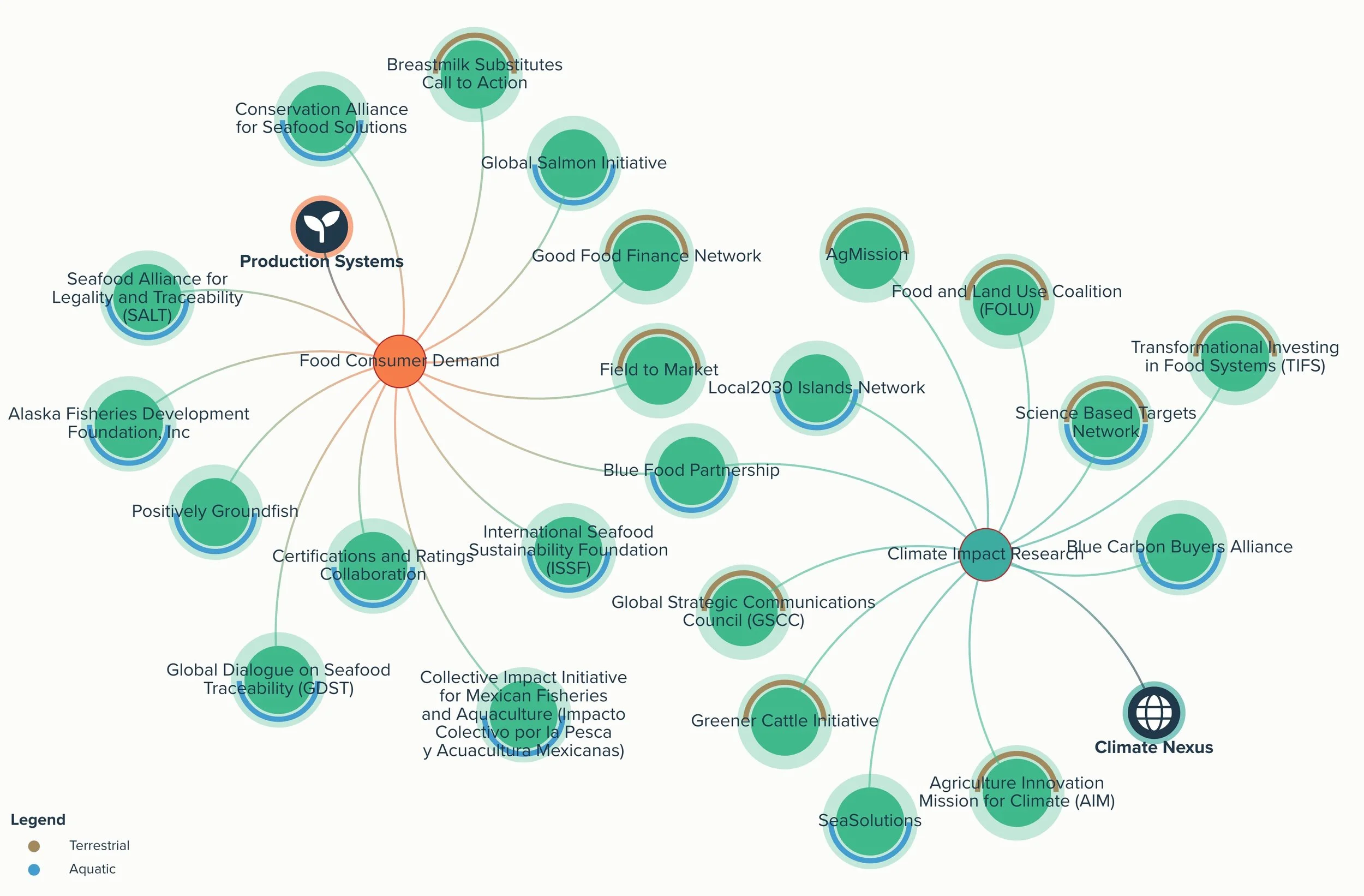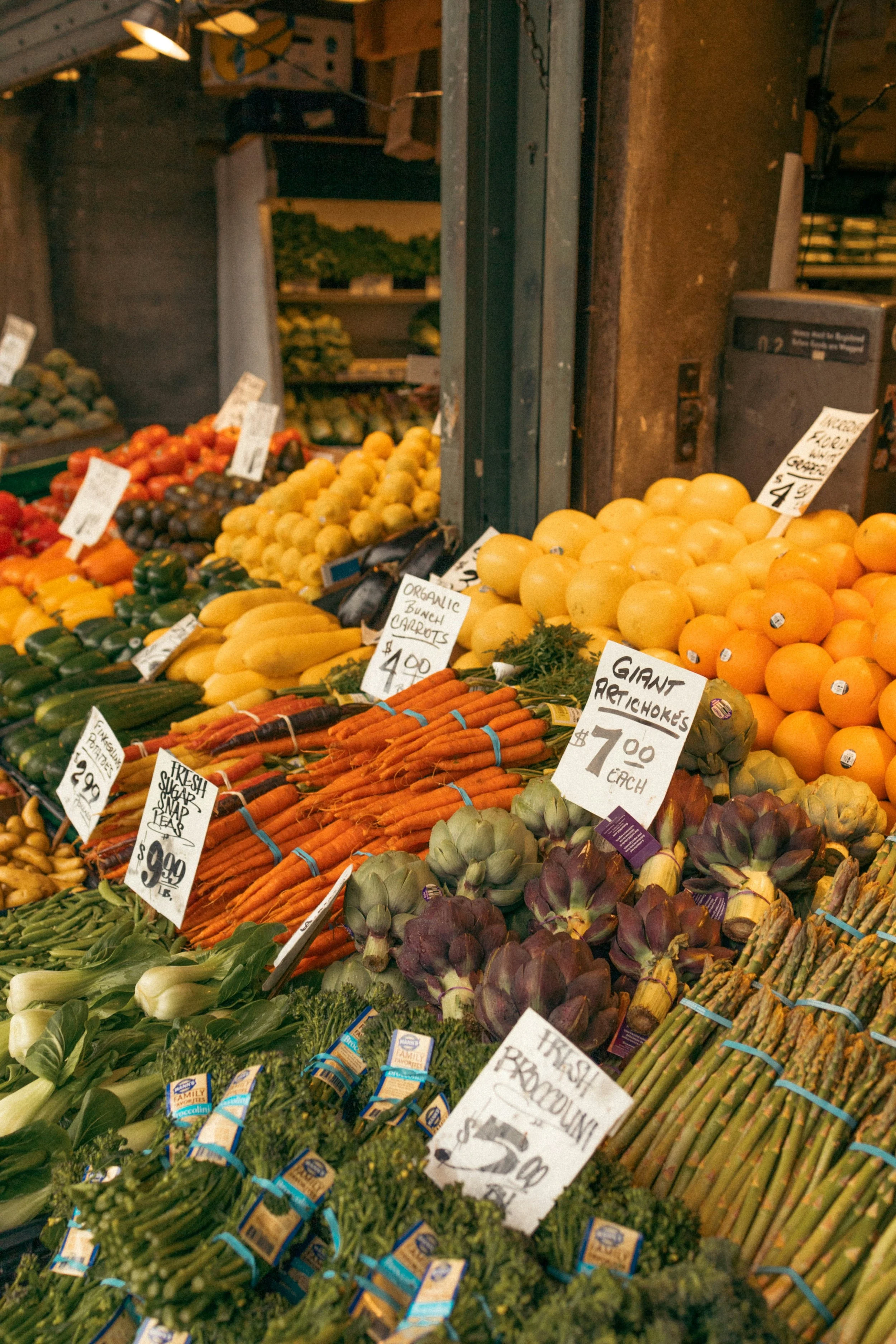STRATEGY DEVELOPMENT THROUGH SYSTEMIC INSIGHTS
Visualizing the Global Food System Network
Collaborators
Meridian Institute
Geography
Global
COLLABORATOR
Meridian Institute is a non-profit consultancy that drives collaboration on environmental and societal issues. Maria Balcazar Tellez, as a Meridian Affiliate, co-led the development of the Global Food System Network Map.
Summary
In 2023, Meridian Institute launched the Global Food Systems Network Map, a tool designed to visually represent and analyze relationships between stakeholders in global food system initiatives. The map highlights the diverse actors working to drive systemic change in food systems. By offering insights into the roles, relationships, and impact of these actors, the map enables organizations to explore partnerships, enhance collaboration, and maximize their impact.

Challenge
Global food systems are complex, with stakeholders operating at different levels across various regions. The proliferation of initiatives in this space is promising but has also led to a fragmented landscape. Understanding exciting relationships within the food system and identifying collaboration opportunities can be difficult.
The Global Food Systems Network Map helps decision-makers make sense of the food systems landscape, enabling them to allocate resources more effectively and maximize positive environmental and social impacts. The map allows organizations to determine where to focus for maximum environmental and social impact, complementing and enhancing existing initiatives.

Process
Stakeholder Mapping
Meridian conducted a series of meetings with key food system experts to gather data on food system initiatives and stakeholders, documenting relationships, issues addressed, and the mechanisms driving change.
Stakeholder Engagement
The team engaged key food system actors, especially in philanthropy and investment, to present the map and gather insights on how it could support strategic decision-making.
Data Visualization
Using Kumu, the interactive Global Food System Network Map was developed to explore stakeholders and their relationships. This provides a comprehensive view of the food systems landscape, identifying collaboration opportunities.
Data Crowdsourcing
Users are encouraged to submit new data and initiatives to enhance the map, which is updated quarterly to reflect ongoing developments in the food systems space.
Project Outputs
Global Food Systems Network Map
A dynamic, interactive tool that visualizes relationships between stakeholders in global food systems, helping users explore connections and identify systemic gaps.
Actionable Insights with Relevant Views
Users can visualize connections between institutions, multi-stakeholder initiatives, and funders, helping identify areas of concentrated effort and systemic gaps requiring attention.
Stakeholder Database
A comprehensive database of food systems initiatives, detailing each initiative’s focus, geographic reach, and partners, serving as a strategic resource for food system efforts.

Key Insights
Strategic Partnerships for Impact: The Global Food System Network Map reveals that partnerships between NGOs, local governments, and the private sector are crucial for scaling food system solutions. Aligning shared goals across these stakeholders amplifies collective impact.
Collaboration Opportunities: Four key areas emerged for further collaboration: alternative protein consumption, forestry and forest carbon, water resource management, and forced labor. Addressing these areas through cooperative networks will enhance resilience.
Decentralized Influence: The mapping process revealed that no single institution dominates the food systems network, with widespread knowledge-sharing and collaboration being the norm.
Data-Driven Decision-Making: By utilizing the network map, organizations can base their strategies and areas of focus on systemic insights, enabling targeted efforts that address gaps identified among global food efforts tracked.






